Kalmar Bobbin Company – Chisel Handles
Contributed by Randall Nelson
When I wrote the article about Solliden Style handles, I made some observations that I now realize were wrong. I will try to address some of them in this article, as well as explaining what I have found out recently about the Kalmar Bobbin Company and the Elfverson Company. At the very least I can finally put a real name to the maker of the “Solliden Style Handle” and say where it was made.
Recently I saw several groups of pristine, unused Swedish chisel handles, in 3 different sizes, for sale on Ebay from a seller in Sweden. He had multiple groups of NOS (new, old stock) chisel handles that he listed as being from an old factory in Sweden. They looked to be what I have always referred to as Solliden Style handles.
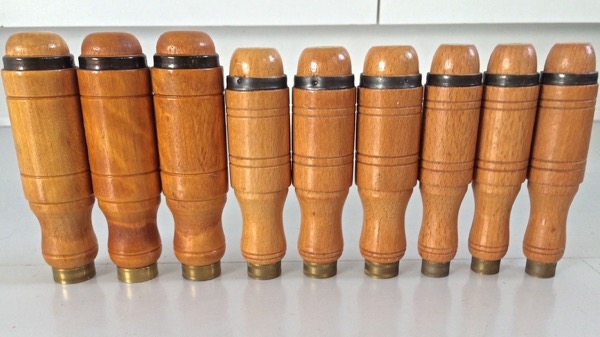
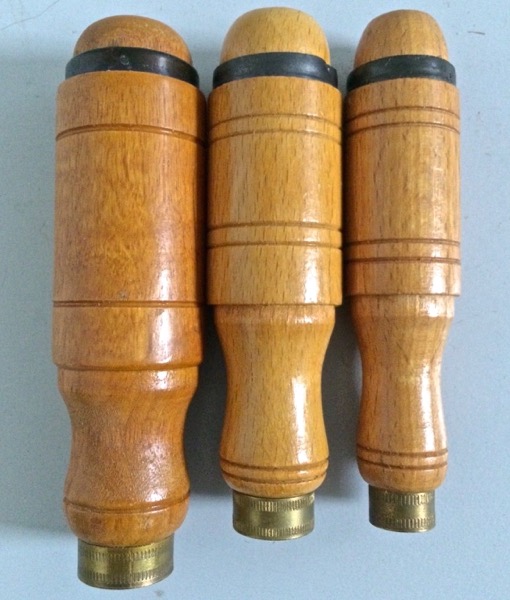
Upon closer examination of the pictures it appeared that the 2 smaller sizes were typical Solliden Style handles, made from beech wood, while the larger size handles were made from birch. That in itself is not unusual, since the larger size Solliden Style handles were sometimes made from birch. However, the larger size handles all had single decorative grooves, instead of the typical paired grooves. This caught my interest, since this is a feature I have only seen used on one type of chisel- the largest size 2” Agersta chisels, a virtually unknown Swedish brand that were usually just stamped with the ubiquitous Made In Sweden
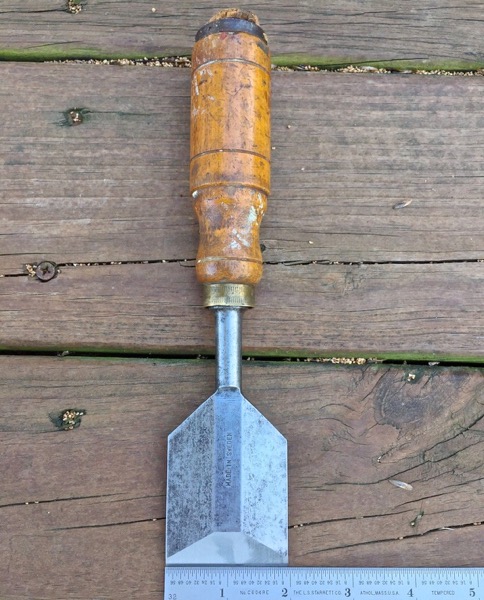
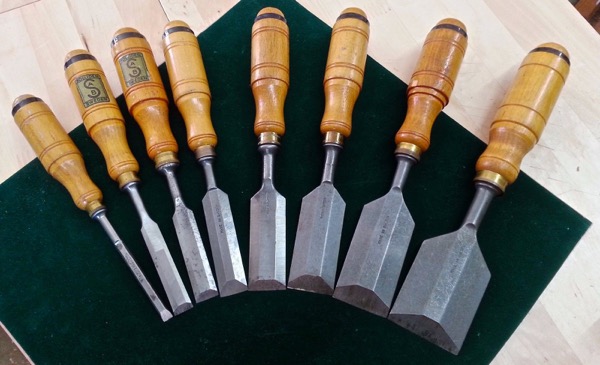

I emailed the seller, asking if he knew the name of the factory the handles had come from and where it was located. I also asked if he knew if the factory made just the handles or if they had produced complete chisels.
I finally heard back from the person in Sweden, who said he had purchased those chisel handles in bulk but knew very little about their history. His eBay selling name was Dina and he said the boxes of chisel handles he had purchased were from an old factory building that was being cleaned out. He did not say what town they came from, but I assume they were from Paryd. The box that held the largest size handles, which only had single grooves, was stamped, “To the Kalmar Bobbin Co. AB, Paryd, Marke #5” on the end of the box. This indicates that those handles were made elsewhere, possibly by another company, as a sub-contractor for the Kalmar Bobbin Company. Or maybe they were just being shipped to the new location as part of the company move from Kalmar to Paryd.
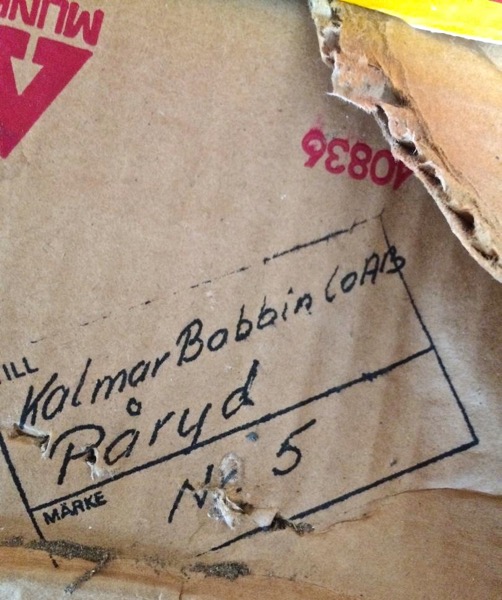
Besides being made from a different type of wood than the others, the handle proportions and decorative turnings of these larger handles were also significantly different from what I think of as the standard Solliden Style handle. No matter who made them, they were not up to “company standards” and this is possibly why this group were never sold and shipped. Or maybe the Agersta Chisel Company went out of business and the last order for this style of handle never got paid for. Although not their usual design, they still weren’t defective, so why didn’t the company just ship them off to some hardware store to sell at a discount? Of course, this doesn’t tell us why the other two boxes of “standard” designs were still there, but questions like these never get answered. At least their existence and the markings on the box finally helped to reveal the manufacturer of the Solliden Style handles.

I had first encountered the name Kalmar Bobbin Company back in January of 2015, when I began doing research on Swedish chisel makers. I had found a page from the Svensk Industrikalender from 1947 that listed tool handle manufacturers in Sweden and the Kalmar Bobbin Company was one of those companies listed. When I tried to look them up, I found that the company, founded in 1870, had primarily made cotton reels, spools and bobbins for the weaving and sewing machine thread industry, as well as wood knobs for furniture. At some point the company name had been changed to Elfverson & Co. and they are still in business today.

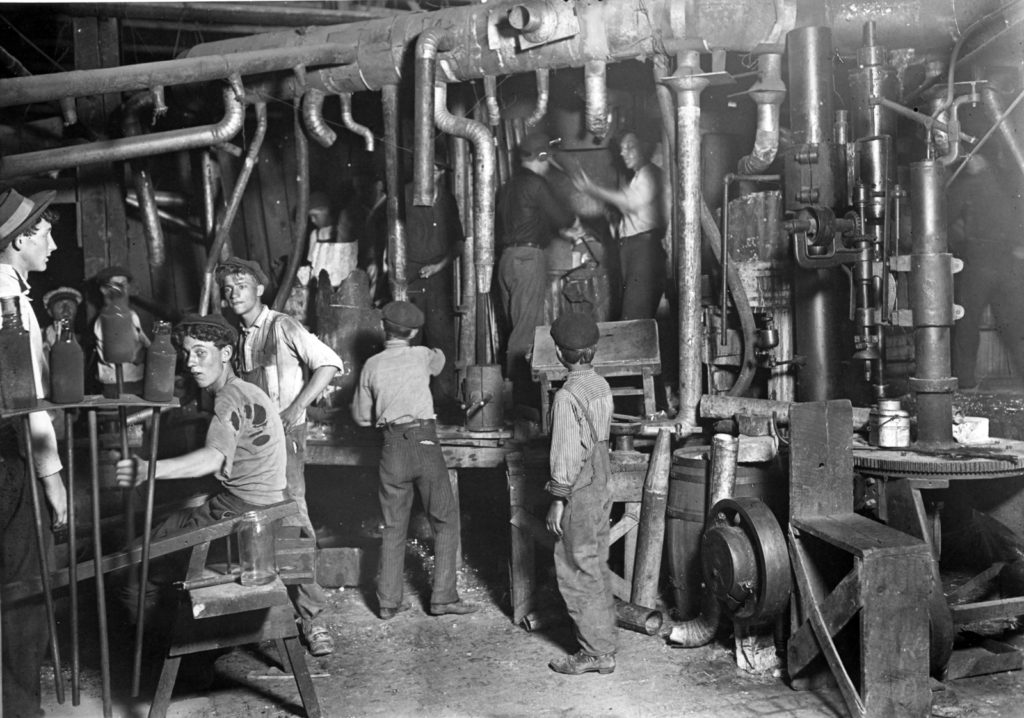
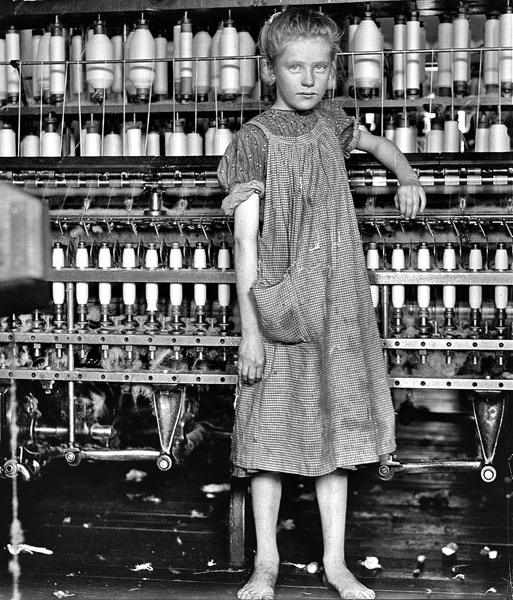
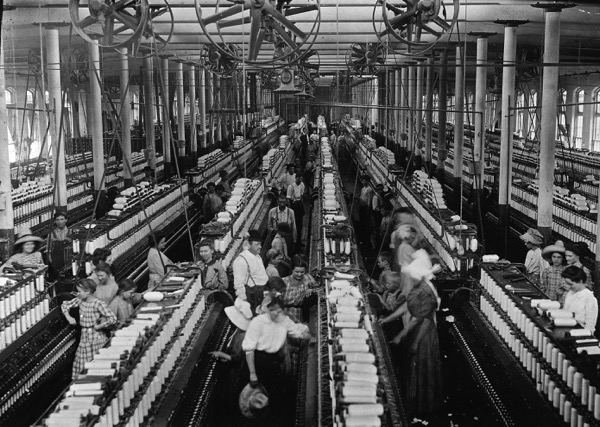
Elfverson & Co. AB produces small wooden parts in Sweden. Its products include furniture knobs, the famous Kalmartrissan yo-yo, wood-tops, toy parts, and dowels, as well as handles for tool manufacturers. Elfverson & Co. AB was formerly known as Kalmar Bobbin. The company was founded in 1870 and is based in Påryd, Sweden. They have been wood turners since 1894. Nowadays, they produce high quality wooden caps and tops for high end whiskey and tequila brands in the UK and USA. They supply wooden tops to companies such as Diageo, Pernod-Ricard, and Brown Forman. The company exports 90% of all production. Main-markets are Portugal, France, and USA. As of March 31, 2018, the Elfverson & Co. AB operates as a subsidiary of Amorim Bartop – Investimentos e Participacoes, S.A. which is owned by Corticeira Amorim and Vätterledens Invest. The company is located in Påryd, 35 km from the city of Kalmar in Southern Sweden.
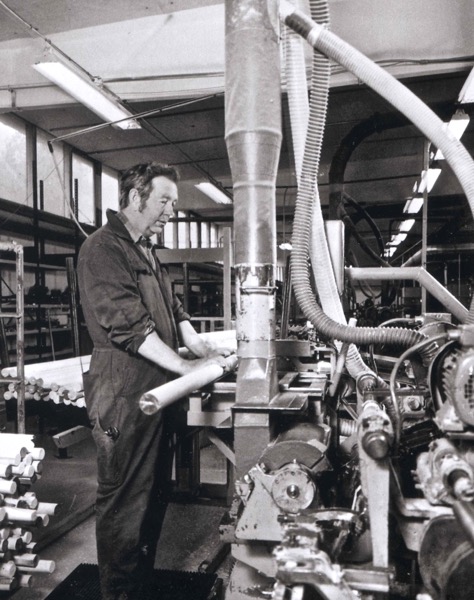
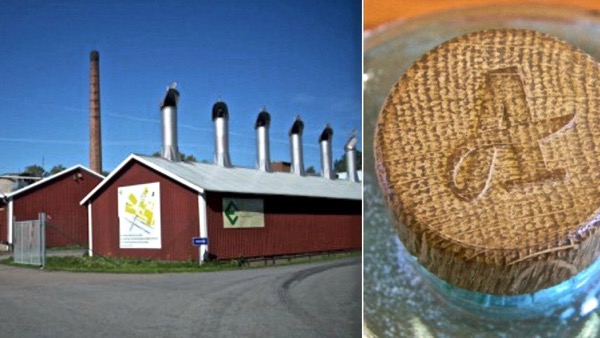
I wrote to the business manager at the Elfverson Company, the present-day descendant of the Kalmar Bobbin Co., asking if they still had any info about chisel companies that had purchased handles from them in the past, especially where those companies were located and who had run them. This is one of my emails:
To:David Paajanendavid@elfverson.se
Dec 19, 2018 at 8:58 AM
David:
Hello and Merry Christmas. I was just wondering if you had found any information on the other chisel manufacturers to which your company sold wooden handles. Did your company make the chisel handles you sold as standard models and then sell them in bulk, when a company would order them, or did you only make them when a chisel company would place an order? Was Beech Wood the standard wood you used for making handles and Birch Wood considered an extra expense? Many of the smaller chisel manufacturers seem to have used your handles, but there is very little information about them today. Companies like Solliden, Janport, Homestrand and A’gersta are now know only from the tools they produced, but no information about who actually owned them or where their tools were produced is now available. Any information about such companies that you could find would be very much appreciated.
Thank you- Randall Nelson
He wrote back:
Dear Randall:
Thank you for your email. Our company made handles for a large number of companies, mostly in Sweden and the UK.
When it comes to chisel handles we did make some for Berg (photo attached) and the last company we made handles for was C.I. Fall of Eskilstuna. They bought from us about 10 years ago.
When it comes to Swedish tool manufacturers we sold most, if not all, directly. In the U.K. we had an agent called Albert Frost. He was located in Sheffield and sold to companies such as Neill Tools, Record, Egginton, Bulldog.
I will have to do some research for you, which may take a little time.
Best regards, David Paajanen, Elfverson & Co.
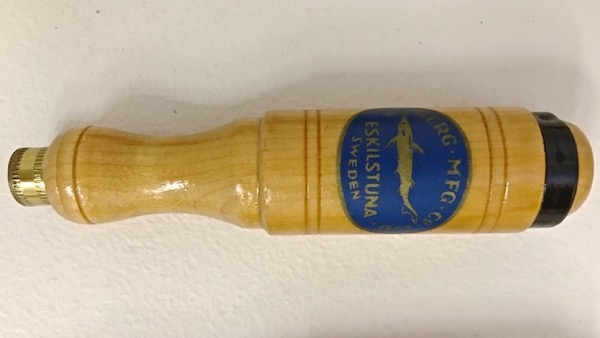
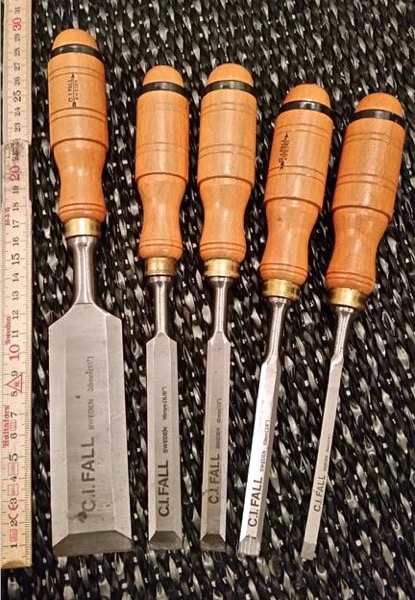

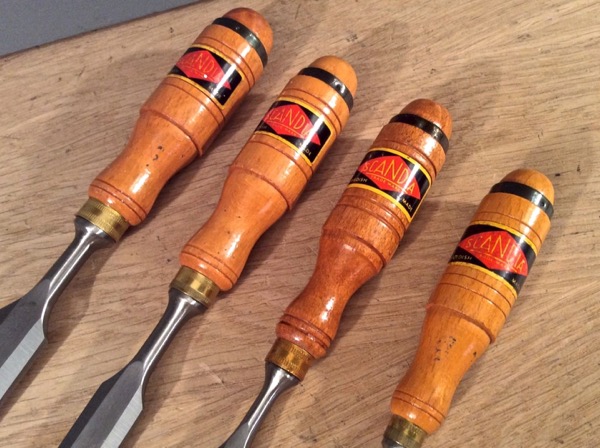
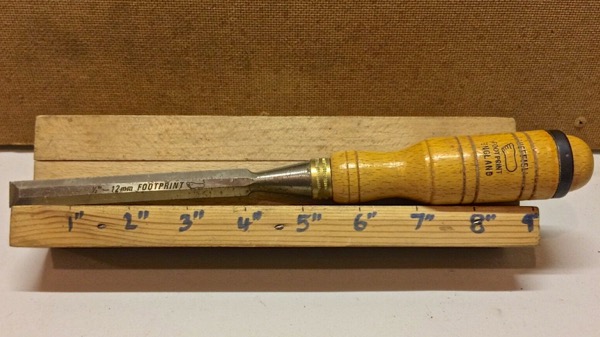
This bit of information and the photo they had supplied cleared up one nagging question: When and why did Berg change their handle rings from being heavy steel with holes and attachment pins to thin steel rounded-over ring that was fitted over a Solliden Style ring step with either a dimpled attachment or a hole and pin attachment? The reason was now obvious- their handles were being made by Elfverson & Co., in the same style as the handles they manufactured for other companies. Now we know where the handles supplied to so many of the smaller chisel makers came from, and we can put a real name on them. Further research may show the differences between the Kalmar Bobbin Company production and the later Elfverson & Co. production. At some point they seem to have phased out making handles for socket chisels. Both Jernbolaget and Bacho had dropped socket chisels from their production lines by 1958. I believe this also answers another question: Who produced the final Berg wooden chisel handle design change, the short-lived Socket Ferrule version? Birch wrote about that Berg design in an earlier Galootopia post and now we can see the thinking – it is the same basic handle design that Elfverson & Co. produced for their other clients. Berg was now Bacho, and they were in the process of exploring the possibility of switching over their chisel blade designs from the typical flared neck pattern to heavier, less labor-intensive tapered shafts, to use with the more modern plastic handles. They were probably thinking about just using up and phasing out the wooden handles, except as special orders.
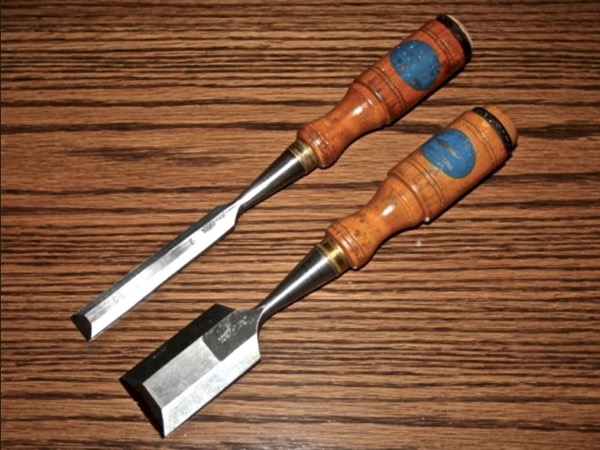
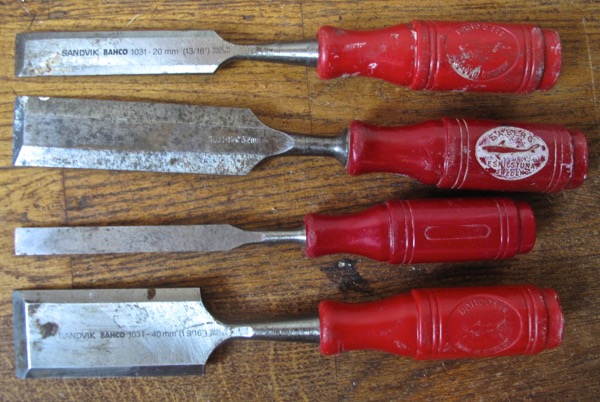
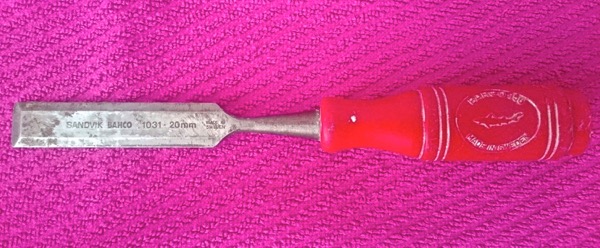
Originally, I had tried to get information about the production of tool handles by the Kalmar Bobbin Company from the Kalmar Lans Museum. They were very helpful but they could not find anything in their files that related directly to tool handle production. I had also been very hopeful that I would finally be able to get a treasure trove of info about Swedish tool makers from the old files of the Elfverson company, but now it looks like that might not happen, either. I sent the Business Manager several other emails, further explaining my interest and asking for his assistance. His initial response had been quite positive, but then, nothing more. He finally wrote back and politely told me he was much too busy to be doing any more background research for me. I believe they may have lots of contact info in their old files, if those files still exist. However, not being in Sweden and not being able to speak or read the language is a real obstacle for me. I think that the only hope for finding any of this information in the Elfverson & Co. files is for someone who is in Sweden and is willing to do the digging to contact them and then go there and search through their old files, if they do still exist. So, if the info is still there, one of our European correspondents will have to do the actual investigations. My biggest fear is that someone will decide they need to clean things up at the Elfverson & Co. offices and they will just throw all the old records away before we get there. Once these sources have gone everything they hold will be lost.
Contributed by Randall Nelson
The comment about selling handle to Sheffield really perked my interest as I have 4 Footprint chisels with Swedish beech handles. The handles are stamped in red SHEFFIELD, a footprint, with FOOTPRINT below and ENGLAND below that. Brass ferrel(sp) double vertical knurled, six lines on the thicker sized handle, dimpled black ring. The blade is a unmarked, socket/tang.It’s also thin like Swedish or English chisel. Not heavy and clunky like American ones.
Hello,
Coincidentally I ended up on this post. About the chisels of Sandvik/Bahco as on the picture below, with the red plastic handles, I can tell that these were made by Nooitgedagt in the Netherlands.
Nooitgedagt was then the largest chisel manufacturer in Europe and 20% of the turnover was related to chisels of Sandvik/Bahco.
When Bahco started making its own chisels in a factory in Spain, this was a big disappointment for Nooitgedagt. Eventually, the company disappeared at the beginning of this century, when it was taken over by an American company.
Greetings, Wim
Translated with http://www.DeepL.com/Translator (free version)
The pictures of the first set on the green felt are ones I took for an ebay listing several years ago. I’m still kicking myself for having sold them…
Mr. Nelson, Thank you very much for going this difficult research! I am sure this information will be an asset to all persons interested in Berg tools